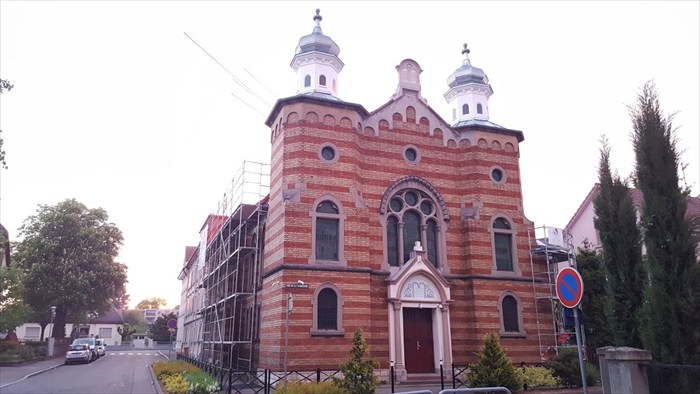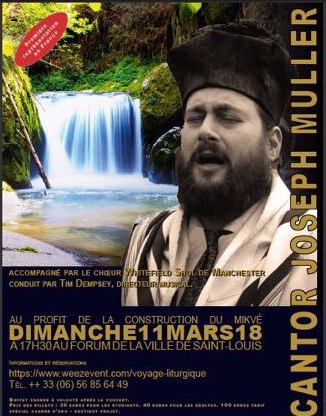https://www.facebook.com/youngwhitefield/videos/1995756570664606/

https://vimeo.com/259973168
The reputation of our Whitefield Chazan and Choir has reached far and wide amongst the Jewish communities.
 So much so that Chazan Yossi Muller and the choir feel privileged to be invited by the Jewish community of Saint Louis, France, to perform in concert along with a reception to raise funds in aid of their local community.
So much so that Chazan Yossi Muller and the choir feel privileged to be invited by the Jewish community of Saint Louis, France, to perform in concert along with a reception to raise funds in aid of their local community.
Saint Louis is located close to the borders of Basel Switzerland and Weil am Rhein Germany, all in walking distance – a fascinating place.
The concert will be taking place on Sunday 11th March 2018.
More about Saint Louis
Home to one of the largest Jewish communities in Alsace at the dawn of the Second World War, the synagogue of St. Louis today requires major restoration work.
In the twentieth century, the Israelites frequented the Huningue synagogue. A community was however organized in St. Louis in 1906. The following year the synagogue was built and the rabbinical headquarters transferred from Hégenheim to St. Louis.
At the dawn of the second world war, the Jewish Community of Saint-Louis had become one of the most important Jewish communities in Alsace.
Designed in July 1904 by Alexandre Louvat, architect of Mulhouse, the synagogue of Saint-Louis was built in 1907 in a neo-Byzantine style, and enlarged in the 1930s following the influx of German Jewish refugees.
Made of sandstone and brick, it is the exact replica of that of Soultz-sous-Forêts, only differentiate the central oculus missing, the design of the Lombard bands and the materials used.
Two particularities of the St. Louis synagogue are to be noted:
– The Tenture which closes and decorates the Holy Ark where the scrolls of the Law are, closes and opens vertically. The curtain is stretched on an iron frame which, supported by steel cables and pulleys, sinks vertically into a space reserved for it.
– A “Soukah” (house used during the “Feast of the Cabins”, or “Laubhuttefest” in German) was set up in the former winter oratory annexed to the synagogue. A crank with its pulley and ropes, allows the opening of the roof of the “Soukah” during its use.

